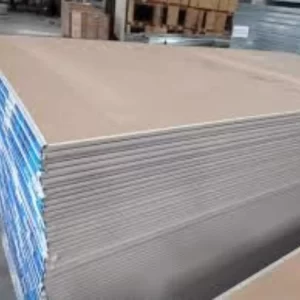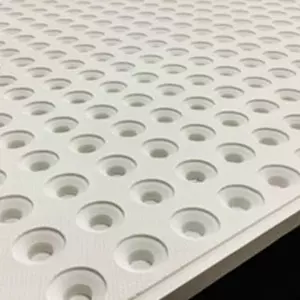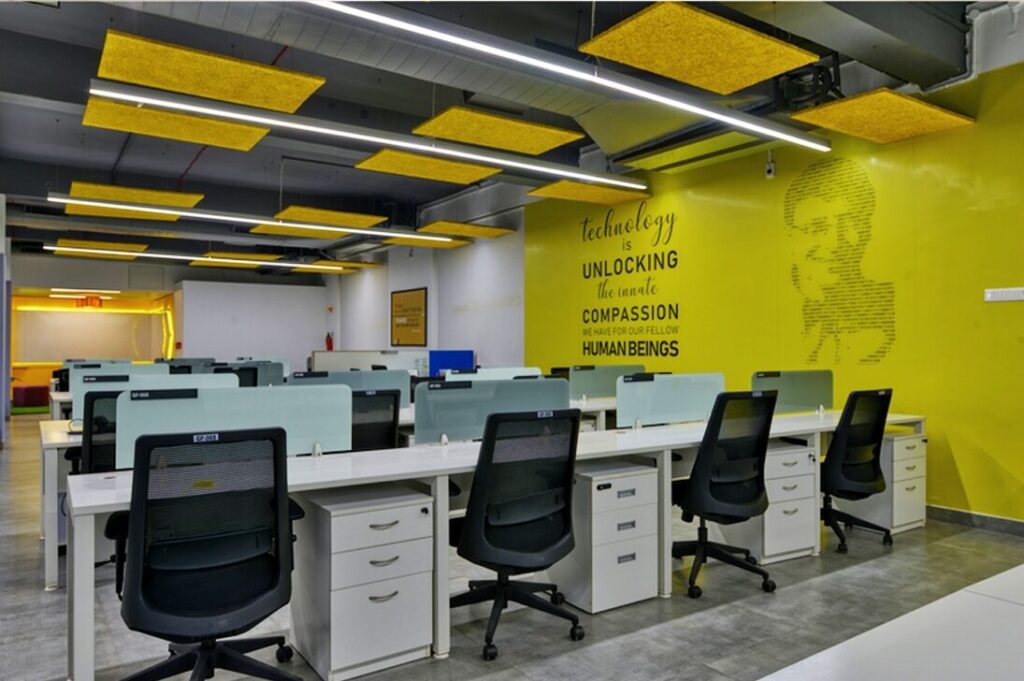The Pros and Cons of Raised Access Flooring
Introduction
The Pros and Cons of Raised Access Flooring refers to an elevated flooring system that creates a void between the structural floor and the floor covering. This void space allows for the concealed installation of various utilities, such as electrical wiring, data cables, and HVAC systems. The flooring panels used in raised access flooring systems are removable, providing easy access to the underlying infrastructure when needed.

Understanding Raised Access Flooring
Raised access flooring consists of modular panels supported by pedestals or stringers. These pedestals are adjustable, allowing for precise leveling of the floor surface. The panels can be made of different materials, including steel, aluminum, wood, or calcium sulfate. This versatile flooring system is commonly used in commercial buildings, data centers, server rooms, control rooms, and other spaces where efficient cable management and flexibility are crucial.
The Pros of Raised Access Flooring
Enhanced Flexibility and Adaptability
One of the significant advantages of raised access flooring is its flexibility. The modular design allows for easy reconfiguration of the floor layout, accommodating changes in technology or office space requirements. This adaptability makes raised access flooring an ideal choice for evolving workplaces, where the need for flexibility is paramount.
Easy Access to Utilities
With a raised access flooring system, access to utilities is simplified. Cables, wires, and other services can be routed underneath the floor, providing a neat and organized appearance. This accessibility makes maintenance and upgrades more convenient, as technicians can quickly locate and address any issues without disrupting the entire space.
Improved Airflow and Cooling Efficiency
The void space created by raised access flooring enables efficient airflow and cooling. This is especially beneficial in environments that require proper ventilation and temperature control, such as data centers. The elevated floor design allows air to circulate more effectively, helping to maintain optimal operating conditions for sensitive equipment.
Reduced Maintenance Costs
Raised access flooring can contribute to cost savings in the long run. The easy access to utilities simplifies maintenance, reducing the time and effort required for repairs or upgrades. Additionally, damaged panels can be individually replaced without affecting the entire floor, minimizing both downtime and expenses.
Enhanced Aesthetics
Raised access flooring can enhance the overall aesthetics of a space. The concealed infrastructure and the clean, uninterrupted floor surface create a visually appealing environment. Furthermore, the range of finishes and materials available for the flooring panels allows for customization and integration with the overall design scheme.
The Cons of Raised Access Flooring
Increased Installation Complexity
Installing raised access flooring requires expertise and precision. The leveling of pedestals, placement of stringers, and fitting of panels demand careful execution to ensure a stable and even floor surface. Improper installation can lead to issues such as sagging, unevenness, or panels that are not securely attached.
Height and Space Considerations
Raised access flooring adds height to a room, which can be a limiting factor in spaces with low ceilings. It is important to consider the required clearance and ensure that the additional floor height does not interfere with doors, windows, or other architectural elements. Moreover, the void space underneath the floor needs to be accounted for in the overall building design.
Potential Noise and Vibration
Depending on the quality of the installation and the materials used, raised access flooring can contribute to noise and vibration transmission. This aspect is particularly relevant in environments where noise reduction is crucial, such as offices or libraries. Proper acoustic insulation measures should be implemented to mitigate potential disturbances.
Limited Load Capacity
Raised access flooring has a specific load-bearing capacity, which may not be suitable for heavy equipment or machinery. Careful consideration should be given to the weight requirements of the intended use to ensure that the flooring system can support the load without compromising its structural integrity.
Higher Initial Cost
Compared to traditional flooring options, raised access flooring typically involves a higher initial investment. The cost includes materials, installation, and additional considerations such as cable management and finishing. However, it is important to weigh this upfront expense against the long-term benefits and the potential cost savings in maintenance and adaptability.
Conclusion – The Pros and Cons of Raised Access Flooring
Raised access flooring offers numerous advantages, including enhanced flexibility, easy access to utilities, improved airflow, reduced maintenance costs, and enhanced aesthetics. However, it also has its drawbacks, such as increased installation complexity, height considerations, potential noise and vibration issues, limited load capacity, and a higher initial cost. When considering raised access flooring for a specific space, it is crucial to evaluate these pros and cons in relation to the specific needs and requirements of the project.
Frequently Asked Question- The Pros and Cons of Raised Access Flooring
1. Can raised access flooring be installed in any type of building?
Answer: Raised access flooring can be installed in various types of buildings, including commercial spaces, data centers, server rooms, and control rooms. However, it is essential to consider factors such as ceiling height, load requirements, and the need for accessibility to utilities before deciding on its suitability for a particular building.2.
2. How often does raised access flooring require maintenance?
Answer: The frequency of maintenance for raised access flooring depends on factors such as the type of flooring material, the level of foot traffic, and the specific requirements of the space. Regular inspections and cleaning are recommended to ensure optimal performance and longevity.
3. Is it possible to change the flooring material on a raised access floor?
Answer: Yes, one of the advantages of raised access flooring is its ability to accommodate different flooring materials. The panels can be easily removed and replaced with alternative options, allowing for changes in aesthetics or functional requirements.
4. Does raised access flooring impact the acoustics of a room?
Answer: Raised access flooring can have an impact on the acoustics of a room, especially if proper acoustic insulation measures are not taken. To minimize noise and vibration transmission, it is important to consider sound-absorbing materials and appropriate installation techniques.
5. Can raised access flooring be used in outdoor spaces?
Answer: Raised access flooring is primarily designed for indoor use. Outdoor spaces require specialized flooring systems that can withstand weather conditions and provide adequate drainage. Therefore, raised access flooring is not typically recommended for outdoor applications.
Other Products

Gypsum boards

Magnesium oxide board

Grg ceiling tiles
Contact Us
Mobile: +919008400701 / 705
Email: sales@jayswalgroup.com

Visit Us
Address:
#6, 10th B Cross, Jayswal Center, KHB Main Road, Kaveri Nagar, Kanakanagar, RT Nagar, Bangalore – 560032, Karnataka, India.
Other Websites: